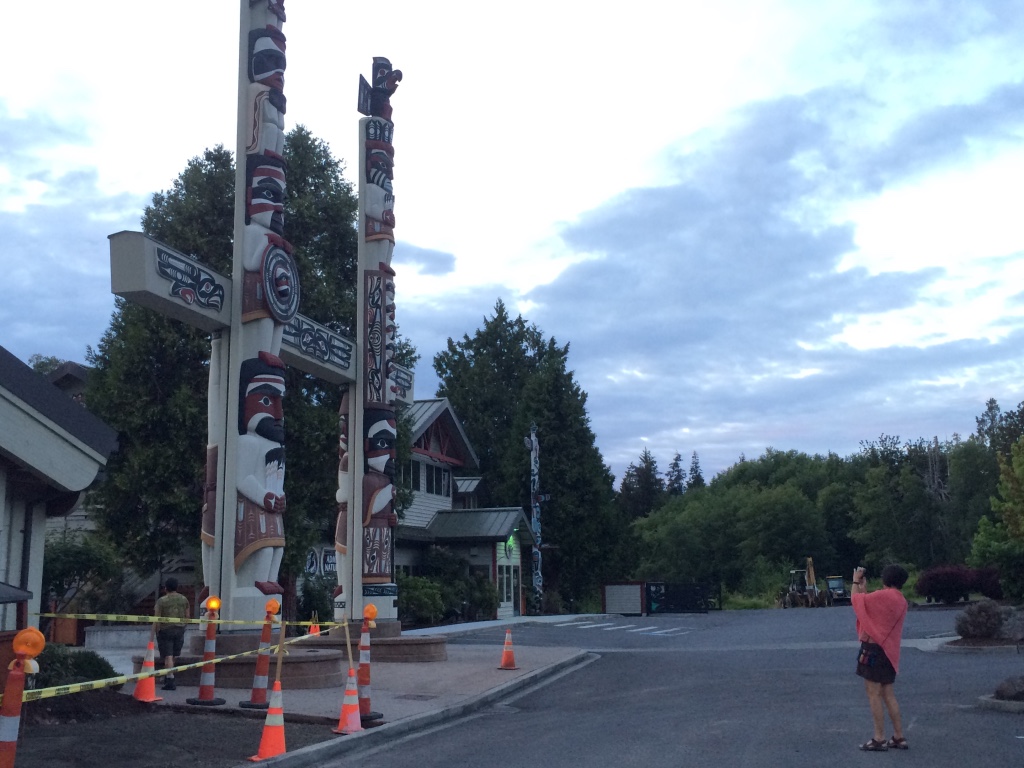First Stop: Sequim
July | 2016
 July 19, 2016
July 19, 2016 — I fly into Seattle, Washington where my sister, Elisa and childhood friend, Liz Tomisato are waiting for me. We hop on the Bainbridge Island ferry and cross the border toward Liz’s home in Sequim (pronounced
Skwim), a lovely island, which lies within the rain shadow of the Olympic Mountains.

Sequim is home to the S'Klallam People. On route to her house, Liz stops at the
Seven Cedars Resort, which is located on the Jamestown Reservation, home of the S’Klallam.


The Resort overlooks the
Strait of Juan de Fuca.
We go in at one point to speak with someone from the tribe and I find out the following: By setting up this resort, the S’Klallam Tribe and its Council were looking for ways to change the stereotypical stigma of Indians who are always seen as drunk and unemployed. The location welcomes tourists and the facilities are rented out to non-tribal members for events and private use. Tourism material notes that all the financial resources raised through rental of the resort and revenue generated from the federal government are intended to enhance the welfare of the tribal community.

We miss out on a carving demonstration, because it is late and the resort is closed. When we go inside the S’Klallam Art Gallery, we find Wendy, the art collector and manager of the gift shop there. She tells us that the traditional totem poles are carved on site and sent all over the world, while at the same time allowing young tribal members to continue the art of carving. Wendy says that it’s not the end product of making totems that matters, but the process of keeping the art and skill of carving alive. No power tools or sanders are used, only carving tools and muscle.
Behind the resort is a cultural center where children are taught to be proud of their culture. It’s clear how important it is for the S’Klallam culture to break down borders and walls, and instead create pride and raise self esteem among the youth. Children are taught the traditional S’Klallam language — spoken and written — songs, music and appreciation of native food. They learn about the importance of good stewardship in relation to their Native culture: to take care of what you’ve got and respect your culture. It’s important knowing where you grow up, who you are within the tribe and who your family is and who your family was, and just being a part of a larger community that is always going to be there for you. The cultural center emphasizes the need to keep traditional tribal songs and the stories alive — ensuring that they are passed down to each generation to come. Tribal members want to ensure that, generations down the line, their families, culture and their community are still there, keeping it alive and passing the torch.
Next ➤






